What do I need to know about positioning and attachment when breastfeeding?
Understanding the importance of how to position your baby and how your baby needs to attach, can help breastfeeding go well
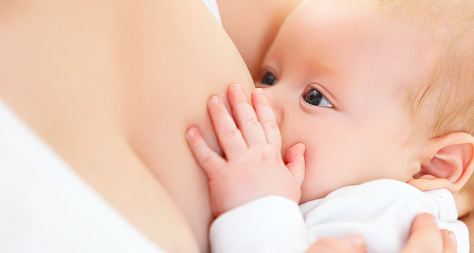
Hold your baby horizontally, facing you. Support the neck and shoulders between your spread out fingers and thumb and support their body along your arm.
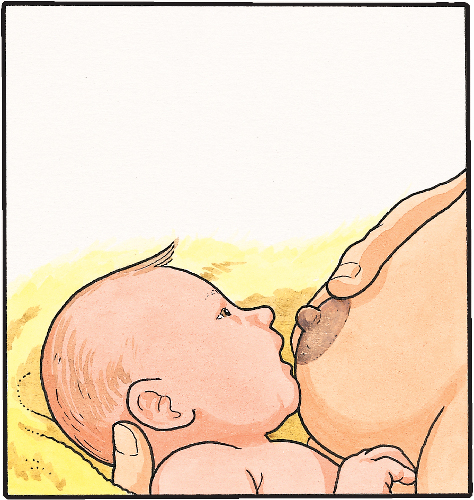
Your nipple should be opposite your baby’s nose. Let your baby’s head tip back a little so their top lip brushes against your nipple.
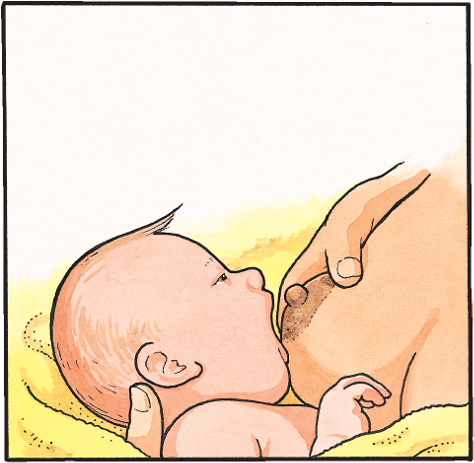
Wait until your baby’s mouth is wide open and quickly bring your baby to you.
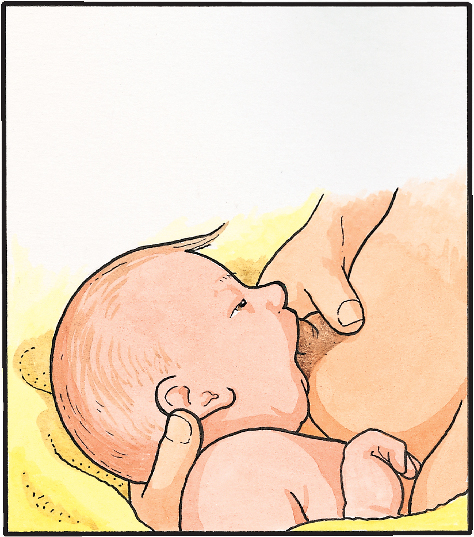
Your nipple should now be positioned under the roof of your baby’s mouth. Their chin will touch your breast first and the bottom lip should make contact with the breast on the areola (the brown circle around your nipple), well away from the base of the nipple. Their head will be tipped back slightly so the tongue can reach as much of the breast as possible.
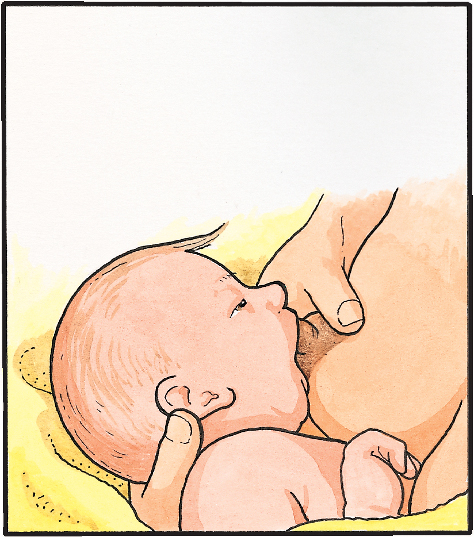
Make sure your baby’s cheek is just touching your breast, their chin is pressing into your breast and their nose is clear. Their bottom lip should turn outwards, and you should be able to see more areola showing above their top lip than their bottom lip. Your baby will start with short sucks and then start making long, slow sucks. The cheeks will look full and rounded as your baby feeds.
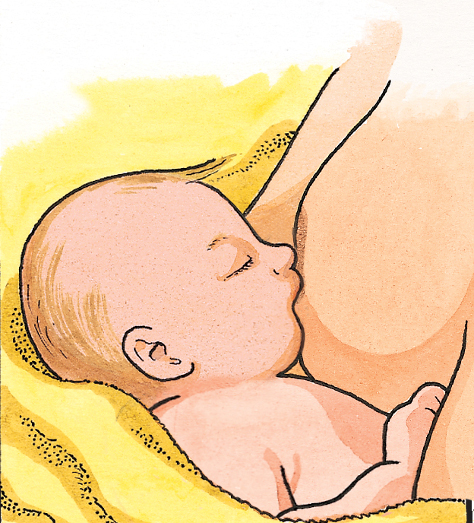
If it hurts, or your baby’s cheeks are sucked in, slip your little finger into the corner of their mouth, which releases the suction. Take your baby off, then try again. Always move your baby to your breast and not your breast to your baby, so they don’t have to strain to reach it.
Attachment
Your position and the way your baby attaches to your breast are vital for your baby to feed easily. If your baby isn’t attached properly, it can be very painful! See below to find out more about how to position and attach your baby.
You should see:
• Your baby turned in towards you, so that their ear, shoulder and hip are in line
• Your baby happily feeding, not fidgeting
• Their mouth wide open, with the bottom lip turned out
• Rounded and plump cheeks
• Some of the areola (the brown bit of your nipple) showing above the top lip
• Your baby taking quick sucks followed by longer, deeper sucks as your milk starts to flow.
You should feel:
• Comfortable and relaxed
• No pain in your breast or nipple.
You should hear:
• Sounds of milk being swallowed.
Your baby is not properly attached if:
• You see pinched-in lips or their cheeks being sucked in
• You hear clicking noises or lip smacking
• You feel pain in your breast throughout the feed
• To take your baby off the breast, slide your finger into the corner of their mouth, then try again.
Top Tip:
With every breastfeed you bond a little more. It really is a precious time for both of you.
Try a few different positions to find one that works best for you
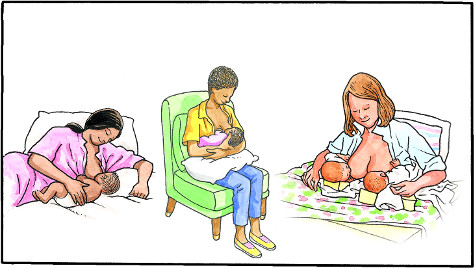
Using a pillow can help
Lying down is relaxing
One way of feeding twins